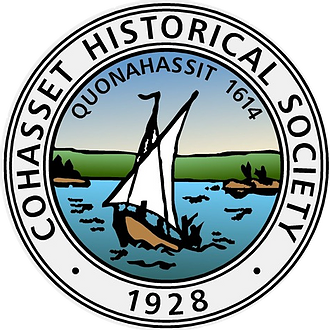John Singer Sargent
An Artist for The Gilded Age: John Singer Sargent
Best known as a portrait painter for the up and coming rich as well those born to privilege, Sargent’s bravura style particularly suited an American society that was being radically transformed by the benefits of efficiency and technology. The economy and quickness of his brushstrokes, the bold and impressionistic way he conveyed personality, the sense of vitality – all mirrored the energy and authority of visionary men, like Andrew Carnegie, John D. Rockefeller and J. P. Morgan, who were creating huge business empires. His paintings of fashionable American women, too, captured their stylish glamour and forthrightness with a painterly freedom that at times, with dramatic under lighting, bordered on the theatrical. For some contemporary critics, his portraits seemed hastily made and too ragged, although most agreed they were certainly exciting.
New York high society, Boston Brahmins, the new merchant princes and philanthropists – all paid high prices to sit for Sargent. Just as they chose the best architects for their Gilded Age mansions, so, too, they chose Sargent since everyone knew he was the best artist for the times. In the ten months Sargent spent in America in 1890 (one of his nineteen visits), he completed more than forty paintings (twenty of them commissioned), which required at least one hundred sittings. Over his entire career, he created almost six hundred oil portraits.
The elegant settings in many of Sargent’s portraits include furnishings and objets d’art that he had collected. He had a passion for French furniture of the late 18th and 19th centuries, both Empire and Louis XVI, along with Aubusson and Persian rugs. Contrary to the heavy forms and crowded patterns of late-Victorian taste, Sargent selected just a few familiar objects depending on whether his sitters stood or sat, adding only those opulent accessories that would accent his subjects’ haute couture dresses and formal morning coats.
In Sargent’s 1906 portrait of Mrs. J. P. Morgan, Jr. (1868-1925), “Jessie,” who married J.P. Morgan in 1890, wears a pink, embroidered satin evening gown with a fitted bodice and sheer short sleeves, puffed at the shoulder. She holds a white fur stole and fan in her right hand. The great Parisian couturier Charles Frederick Worth probably designed the dress. This is one of Sargent’s last portraits in oil, since Jessie required thirteen sittings. After this, Sargent would favor working in charcoal for its ease of execution.
Mrs. J. P. Morgan, Jr. (Jane Norton Grew), 1905, Oil on canvas, The Morgan Library (A2165)
In contrast, for his portrait of Olivia Alger Richardson (1866-1956), he chose a small half-length format with a monochrome palette, which he reserved for paintings of people that he made for his own enjoyment. This allowed him to highlight those qualities he most admired. A good friend of Sargent’s sister Violet, Olivia was sixteen and living with her parents in the American expatriate community of Nice, France when Sargent painted her and Violet, three years younger, completing Olivia’s portrait in just two or three mornings. Her upswept hair marks her growing sophistication.
Olivia Alger Richardson, 1883, Oil on canvas, Museum of Fine Arts, Boston.
Born in Florence, Italy, in 1856, Sargent attended the Academy there and then studied painting with Carolus-Duran and took classes at the École des Beaux-Arts in Paris. His first working visit to America was in 1887, followed by his first solo art show the following year at the St. Botolph Club, then on Boylston Street facing the Public Garden. The twenty-two paintings exhibited included The Daughters of Edward D. Boit, probably one of Sargent’s best-known and loved pictures of the children of rich New Englanders in their Paris apartment, and the portrait of Isabella Stewart Gardner, noteworthy for his depiction of the forty-seven-year-old art patroness in a tight-fitting, low-cut black dress with a long strand of pearls at her waist, seemingly enshrined by an Italian fifteenth-century tapestry behind her.
Isabella Stewart Gardner, 1888, Oil on canvas, Isabella Stewart Gardner Museum (P30w1).
The Daughters of Edward Darley Boit, 1882, Oil on canvas, Museum of Fine Arts, Boston.
Boston could lay claim to Sargent as its favorite “modern” artist. A friend of two eminent Gilded Age architects – Charles McKim, Mead, and Stanford White – Sargent was chosen to paint the murals for the Boston Public Library (completed in 1895), which they had designed. Following suit, in the early years of the Museum of Fine Arts, the trustees sought out the guidance of prominent artists like Sargent for recommendations in purchasing paintings, such as an El Greco, which they acquired in 1904. The Museum turned to him again in 1916 to decorate the rotunda of their new building on the Fenway, which had opened in 1909. Indeed, an “American abroad,” who never resided in the United States, Sargent’s rise to fame paralleled America’s own expansionist agenda. In 1925 Sargent died in London, after which memorial exhibitions were held in Boston, London, and New York.
Copies of Sargent’s portraits of Mrs. J. P. Morgan and Olivia Richardson are in the Society’s Gilded Age exhibit. Portraits of Olivia’s mother, Ellen Phelps Richardson, and brother Charles Francis Phelps Richardson, painted by the Russian artist and sculptor Prince Paolo Petrovich Troubetskoy, are also in the exhibit. These were done in 1899 and 1900 while Troubetskoy was a guest of the Richardsons at their summer residence in Cohasset, Holly Hill Farm.
This essay was researched and written by Paula Morse, Cohasset Historical Society board member, museum planner, and interpretive text writer.
Further Reading
Trevor Fairbrother, John Singer Sargent. New York, Harry N. Abrams and the National Museum of American Art, Smithsonian Institution, 1994.
--------, The Bostonians: Painters of an Elegant Age, 1870-1980. Boston, Museum of Fine Arts, 1986.
